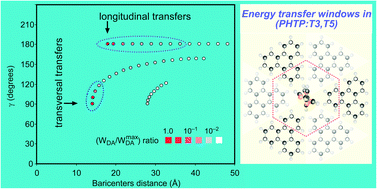A theoretical study of conformational aspects and energy transfer between terthiophene and quinquethiophene in perhydrotriphenylene inclusion compounds
Abstract
A theoretical study of models with supramolecular architecture of co-inclusion compounds based on the host perhydrotriphenylene and guests


 Please wait while we load your content...
Please wait while we load your content...